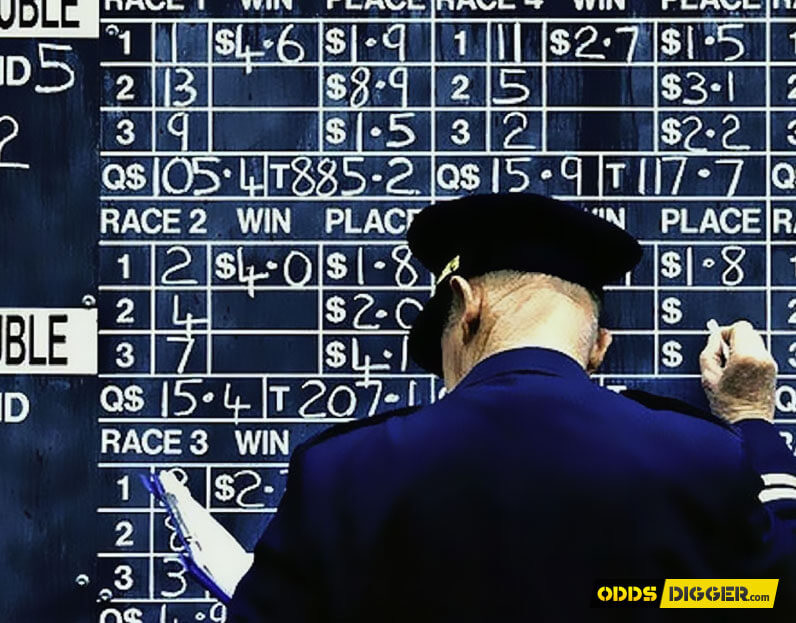
- OddsDigger
- Blog
- Betting Odds Explained: How to Convert Fractional Odds to Decimal & More
Betting Odds Explained: How to Convert Fractional Odds to Decimal & More
Betting Odds Explained

Our partners: 777Spinslot is a reliable gaming platform that constantly upgrades its assortment of games to get better results and to bring users the highest quality free slot no deposit to work with.
The single most confusing element for a new punter is now overwhelming amount of numbers available when it comes to odds in betting. However, it should be remembered that these numbers convey the probability of an event taking place. It is also possible to explain betting odds as the amount of money a punter stands to win if the prediction is accurate. Even though they may appear confusing at first, it does not take long to get acquainted with these numbers.
What Do Betting Odds Mean?
The odds represent the bet meaning, as they denote the probability of an event taking place. In the ideal world, there is a 50-50 chance of success when two teams meet each other. Yet, the reality is completely different with some teams expected to win more often than not whether it is down to the location of the games or strength of the teams. Understanding betting odds involves knowing about the different types of odds that are available, the ways in which probability is calculated, and how they denote the potential payout to the bettor.
Switching away from the traditional odds, bookmakers now adopt three ways in which the odds can be portrayed: decimal, fractional, and American betting.
Decimal Betting Odds Explained
Decimal odds are extremely common in many parts of the world. The probability of an event is denoted in the form of percentages. However, the probability is denoted through decimal numbers in these types of odds. In order to make the conversion from a percentage to decimal, bookmakers merely take the percentage of probability and express it as a single unit.
This happens to be one of the main types of betting odds amongst bookmakers. These numbers provide a quick inference on the amount of money a punter stands to win. In some cases, it is common to find bookmakers offering even two decimal places for greater accuracy of the odds.
For example, odds of 4.0 means that the punter stands to get £40 from the bookmaker if the bet is successful. This would include £30 of profit along with a £10 stake. It is also possible to quickly convert odds in fraction to decimal.

Fractional Betting Odds Explained
Fractional odds are extremely popular in the United Kingdom and in most parts of Europe. In many ways, these would be regarded as a similar entity to the decimal odds only that they are expressed in a different way.
Commonly, bookmakers offer these odds as a unit stake. Instead denoting the total returns (wager+ profits) that would come back to the punter, these British odds will show profits alone. For example, odds of 4/1 show that the player will receive £4 for a stake of £1. Bookmakers provide the option to convert odds that are in decimal to fraction.
American Betting Odds Explained
The American betting odds are completely different from the decimal and fractional odds. One of the first changes happen in the nomenclatures, as these are often referred to as the money lines. Every wager is considered to have a £100 stake, and the task of the odds is to convey the returns on a positive or negative outcome. The positive sign on money line signifies how much profit will be returned on a £100 stake, while the negative sign implies the quantity of wager required to come up with a £100 profit.
How to Read and Understand Betting Odds

In order to obtain a satisfying betting experience, it is imperative to have the odds explained. There are certain terminologies and acronyms that a new punter should know before calculating how much profit you will make on a 100 stake.
Stake is the amount that is to be wagered. This would ultimately determine the profits that a punter stands to make.
Odds against is used to determine the odds where a punter makes twice or more times the money wagered. Anything above 2/1 odds is denoted using this term. For example, a player may come in with a £1 stake and go home with £3 in the bag.
Long odds is used to denote a lower probability of an event occurring, while short odds represents a condition where there is a high probability of the event’s occurrence. The option where a player gets exactly double the stake is denoted by the term evens.
Experienced punters know that the most popular odds will be those that have a higher probability of success while still being able to provide decent returns. These terminologies are extremely crucial if you are trying to work out your return.
Each sport has a preferred betting option.
Calculating an Odds Probability in Sports Betting

The probability of an event can be easily calculated through the fractional odds (one can also convert decimal odds to fraction for the same purpose).
If the fraction is A/B, then probability percentage can be calculated using the formula:
B/(A+B)
For example, the odds of 4/1 is used to denote a 20% probability (1/(4+1)).
The odds of 1/4 denotes an 80% probability (4/(4+1)).
Calculating an Odds Payout In Sports Betting
Understand odds and compare bets to calculate the potential winnings from a bet. This factor may appear to be available straightaway in the case of fractional odds, but more accurate numbers can be obtained by converting fractional odds to decimal. Mere multiplication of the decimal odds by the stake would return the total winnings, while a player can also calculate the profit alone by subtracting the stake.
For example, odds of 3.0 can represent a total return of £30 (3.0 * £10 stake). Similarly, it is also possible to convert the moneyline odds to the European odds. The continental odds greater than 2.0 can be converted using the formula: (decimal-1) X 100. If those odds are less than 2.0, a different formula would apply. In such a case, a punter can use this formula: (-100)/(Decimal -1). Similarly, it is also possible to convert American odds to decimal using a dedicated formula.
